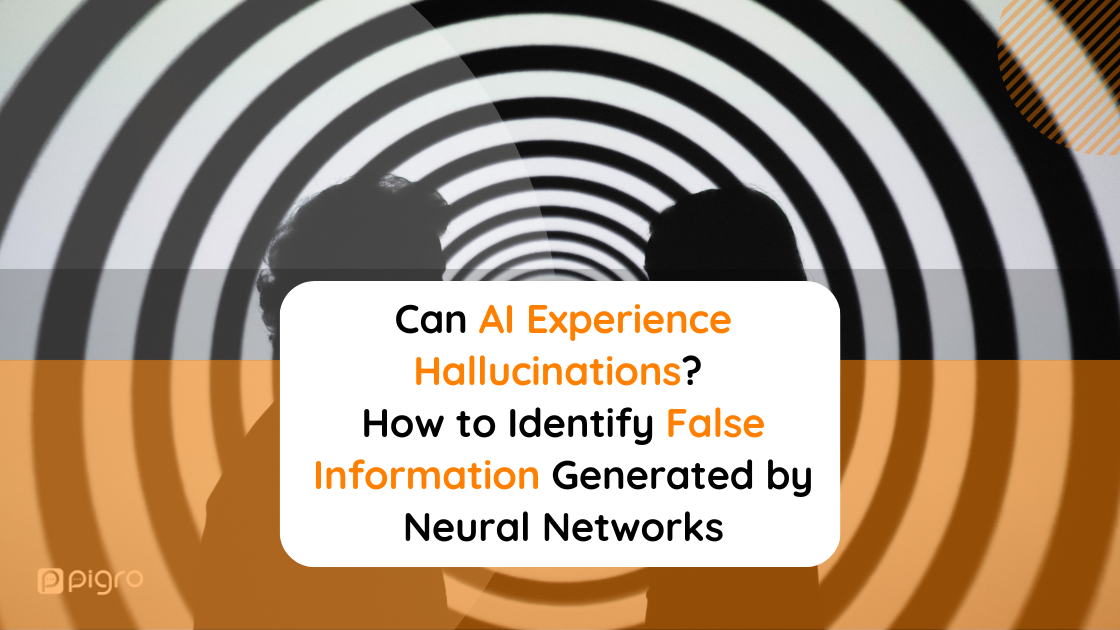Philip Dick once wondered if androids dream of electric sheep. This a question that seemed absurd to us, yet today we ask: can artificial intelligence have hallucinations? The answer is yes.
Let's start with the basics and try to understand what hallucinations mean when it comes to Artificial Intelligence and how to manage them.
What causes hallucinations in Generative Artificial Intelligence?
Artificial Intelligence is a cutting-edge technology that endeavors to create algorithms and models with the ability to learn from data and enhance performance independently over time. These models encompass various applications such as image recognition, natural language processing (referred to as LLM or Large Language Model), planning, and many other domains.
In the case of humans, hallucinations are typically a result of cognitive dysfunction. However, for "artificial brains," hallucinations occur due to algorithmic distortions, leading to the generation of false information, manipulated data, and imaginative outputs.
However, the reason behind this phenomenon is quite clear.
Generative AIs always begin with the underlying objective of providing a response. This is achieved through thorough data processing. In instances where there is insufficient data available, they employ innovative techniques to generate the necessary information.
The hallucination of Large Language Models.
Large Language Models such as Chat GPT or other conversational tools, in particular, require a huge dataset to process, which they normally find on the web. Here, they learn vocabulary and the relationships between them, they learn to understand the different meanings of a word used in different contexts, and they grasp the complexity of human language in very little time. All of this is done autonomously and unsupervised.
What are the boundaries of these models?
These models lack a genuine semantic understanding, personal thoughts, and the ability to independently formulate concepts.
Therefore, if the inputs are of low quality, their processing will yield an inaccurate outcome, possibly even fabricated.
The following factors can lead to hallucinations in generative AI:
1. Insufficient data or context: The machine may not have enough data to process a response accurately or may struggle to contextualize the available data properly.
2. Excessive generalization: The AI may generalize too much, resulting in the creation of bizarre and illogical connections between different sets of data.
3. Overfitting: This occurs when the AI learns too much from the training data and memorizes it instead of generalizing, leading to the generation of distorted associations.
How to Recognize and Prevent Hallucinations in Artificial Intelligences
Identifying hallucinations in generative AI can be a challenging task, but it is not as daunting as it may initially appear.
It is important to approach the use of a tool based on the Large Language Model with a critical and discerning mindset.
Below are several techniques and precautions that can be employed to identify misleading information generated by AI.
Semantic Analysis
We have previously mentioned that one of the constraints of Large Language Models is their inherent lack of semantic comprehension. The presence of semantic inconsistencies serves as an initial indication of potentially inaccurate information.
Verification of sources
If a statement or response appears unusual, it may indicate a potential distortion. It is always advisable to cross-check the information obtained by referring to trustworthy sources before considering it as accurate.
Coherence and context
Hallucinations often lack coherence with the surrounding context or the information provided. If a response seems inconsistent or contradicts the ongoing conversation or general knowledge, it may suggest a potential hallucination.
In-depth questioning
If you find yourself uncertain, it is advisable to engage in further inquiry by asking additional questions to the AI system. This will help assess the coherence and depth of the information provided. In the event of a hallucination, it is likely that the model will struggle to offer coherent or detailed explanations. Another technique you can employ is the contradictory test, where you deliberately pose inconsistent questions to observe how the model responds.
Cross-checking
Utilize additional sources or tools to validate the information. As Agatha Christie famously stated, "One clue is suggestive, two clues are intriguing, but it is the convergence of three clues that substantiate the proof."
Awareness of limitations
It is crucial to keep in mind that language models have their limitations and may produce inaccurate or deceptive information for various reasons. Approaching the use of AI with awareness and critical thinking will enable you to make informed judgments.
Conclusion
Well, now you understand that generative AIs can produce content that may seem realistic but may not be accurate or even true.
Understanding the limitations of AIs and Large Language Models should not discourage us from appreciating their valuable contributions or questioning their reliability.
Instead, it empowers us to develop a mastery of these tools and leverage their full potential.
Because, we remember, 'It will not be artificial intelligence to take your job away; it will be someone who knows how to use it to take it.'
Read also:
- Conversational Interface (CUI) and Natural Language
- ChatGPT: the future of AI to provide answers to employees?
Want more information about Pigro? Contact us!



